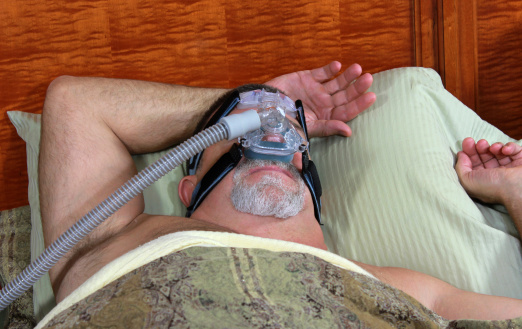Over 18 million Americans have sleep apnea. The gold standard of treatment is the application of positive airway pressure called CPAP. Unfortunately, after one year on average, only 50% of patients are using it regularly.
1. “My nose is always dry and irritated”
The new machines have heated humidification, which can be adjusted to your comfort. If this fails, nasal saline solutions and Neti pots can be helpful at bedtime.
2. “The mask leaves a mark on the bridge of my nose”
There are pads called the Gecko Nasal Pad that can be placed on the bridge of the nose to prevent this. These have been manufactured in such a way as to maintain a tight seal that will not leak. In addition, several masks go under the nose like an oxygen cannula.
3. “The pressure is too high and I feel like I can’t breathe”
There are several solutions to this problem. First, there are autotitratable machines. These CPAP machines vary the pressure they generate depending on the amount of airway obstruction at a given moment. As a result, these machines operate at a lower average pressure during the night than straight CPAP machines.
4. “I wear a nasal mask and I wake up with a dry mouth during the night”
You are probably leaking air out of your mouth. The solution is to either wear a chinstrap or be fitted for a mask that goes over your nose and mouth, called a full face mask.
5. “I’m claustrophobic and could never wear one of those masks”
There are several very successful behavioral interventions available in order to desensitize people with claustrophobia and anxiety. You should enquire as to whether a sleep center in your area offers this.
6. “I have insomnia–so how am I supposed to sleep with one of those contraptions?”
Many sleep centers are successfully utilizing sleep medications while the patient is getting acclimated to CPAP. This can be followed by CBT (Cognitive Behavioral Therapy).
7. “My mask leaves red marks on my face that makes me feel embarrassed”
There is a new product out called the RemZzzs Mask Liners. It is a fibrous material that is placed between your mask and skin. It is quite effective in preventing skin marks and also decreases leaks around the mask.
8. “My nose is completely blocked so how can I use one of these masks?”
There are several options for you. First, a referral to an otolaryngologist may be helpful. If the blockage is due to enlargement of nasal structures called turbinates, or septal deviation, surgery or a procedure called radiofrequency ablation (RFA) may be an option. Additionally, there is a mask called the Oracle that allows the pressure to be applied through the mouth only.
9. “I wake up bloated and full of gas”
This usually subsides in a few weeks. However, if it persists, avoid eating within two hours of bedtime. Try elevating the head of your bed by 30 degrees. Finally, a switch to an autotitratable machine may eliminate this.
10. “I’ve tried it all and still can’t wear it”
Look into alternative treatments. Oral appliances fashioned by dentists who specialize in this can be effective. There are also new surgical procedures available.


